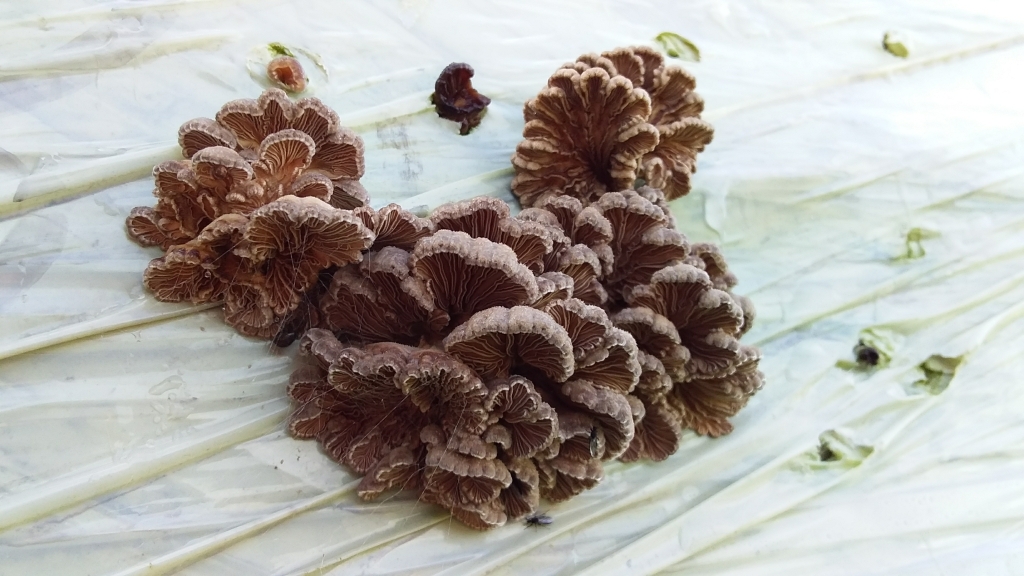Tags
ecology, farm, Fleurieu Coast, Fleurieu Peninsula, fungi, regeneration, regenerative agriculture, revegetation, seasons, southwestern Fleurieu, trees
As regular readers will be aware, when we bought Yarnauwi 9 years ago, there were just 3 trees (Eucalyptus camaldulensis) across the 47 acres. The area was originally managed by the Kaurna as a blue gum/pink gum open woodland with red gums dominating the creek lines. Then almost all trees and vegetation were removed after colonisation and the land was primarily used for cropping, cattle and sheep grazing for over 100 years with subsequent compaction and drying out of the landscape, disappearance of most native grasses, and creation of erosion gullies. More recently, the paddocks were sprayed out annually and re-sown for hay production, and rubbish was deposited in various locations around the property. Rainfall is in the 450-650mm range, and natural regeneration has been greatly hampered by the hundreds of resident kangaroos. Given all this, it is little wonder that for the first 6 years of our relationship with the land we saw virtually no fungi/mushrooms, and when we did it would only be in association with mulch brought in from outside and spread on some of our early plantings.
Since about 2018 we have seen a steady increase in fungi in various areas around the property. Of course, what we see is just the fruiting body or sporophore of vast underground networks of hyphae/mycelium that pop up to reproduce when the conditions are right (enough rain and warmth). They generally like organic matter, water, and minimal disturbance, and are a sign of healthy soil, so we had been hoping that over time they would start appearing with improved land management strategies.
Fungi come in all different shapes and sizes, and perform a range of ecological roles. Many are ‘mycorrhizal’ – meaning they form a symbiotic relationship with the roots of a plant, attaching on to the roots and greatly extending them, providing soluble nutrients and water to the plant in exchange for sugars from the plant’s ability to photosynthesise. It has been estimated that over 90% of native plants depend on fungi, and plants can only grow taller than 2 metres if they have a fungal partner to supply water, nutrients and communication. So if you like trees and plants, you should thank their fungi friends for providing so much unseen support! (Much like women and carers in our society!)
Many other types of fungi are ‘saprotrophic’ – meaning they break down and recycle nutrients in decomposing organic matter and turn it into soil. Fungi and termites are the only two things on earth that can break down the lignin in wood. They are the recyclers of forests. Again, they underpin the health of almost all Earth’s ecosystems.
A few years ago we started noticing what looked like balls of horse dung near some of our bigger planted pink gums (Eucalyptus fasciculosa) and blue gums (Eucalyptus leucoxylon). They were popping up after heavy summer or autumn rain events as a hard ball, and then over time decomposing into a powdery mess of spores as the sac eroded or split open. It turns out that these guys are mycorrhizal, and from the Pisolithus genus (probably Pisolithus arhizus). Their common name is the ‘Dyeball’ or ‘Horse Dung Fungus’, and the spores can indeed be used as a natural brown-gold dye. They are native, common, and found around the world.
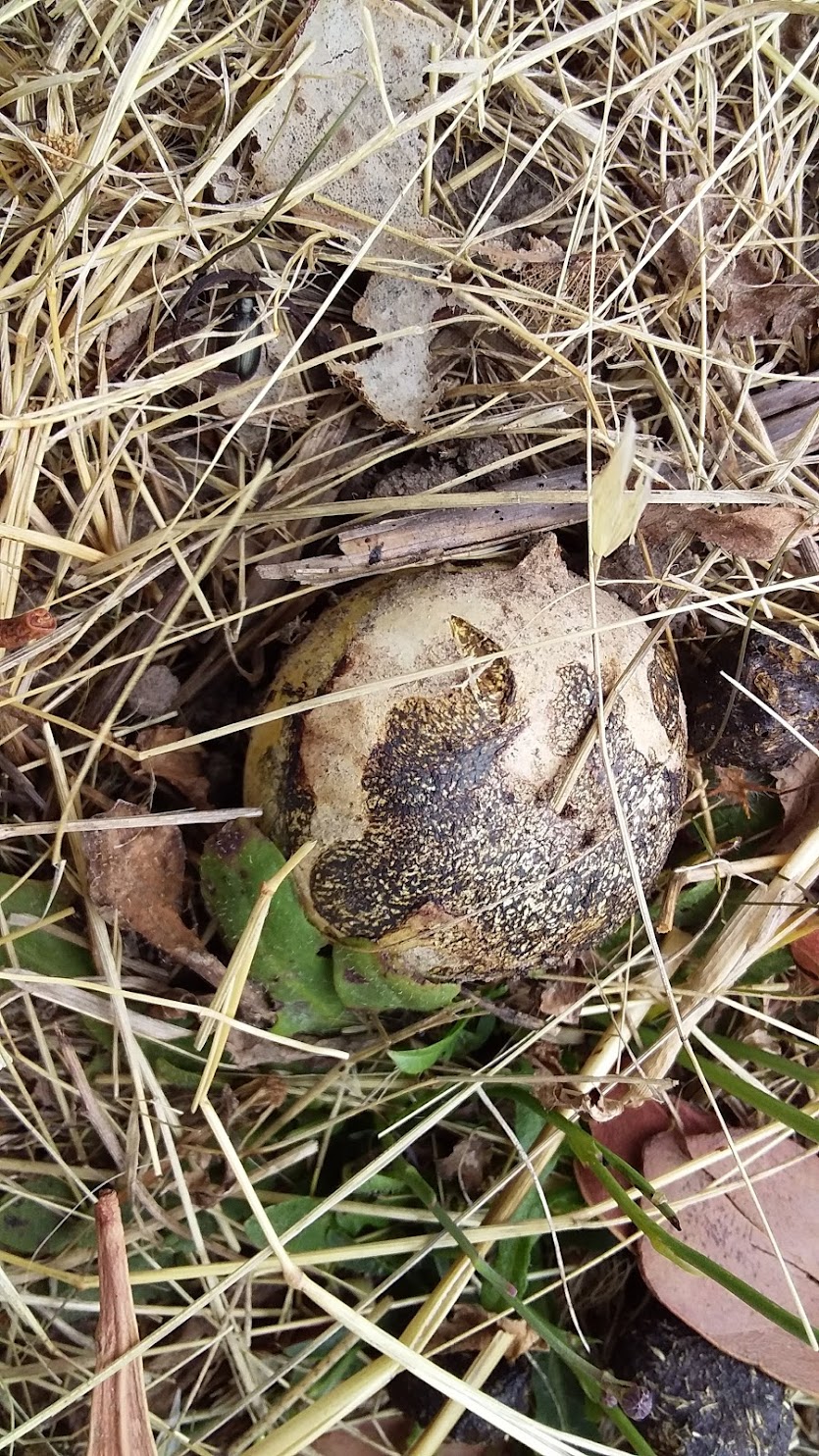
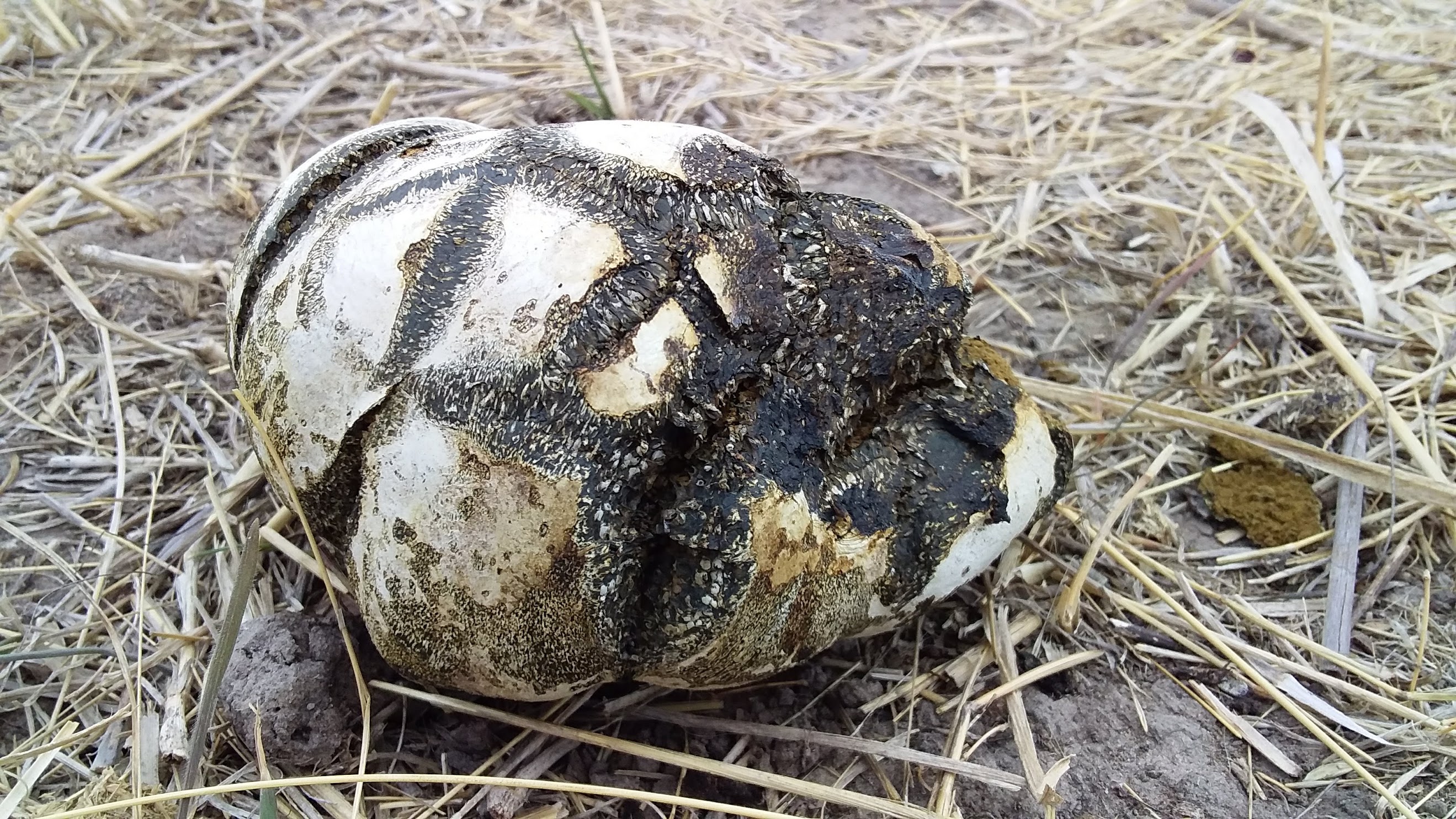
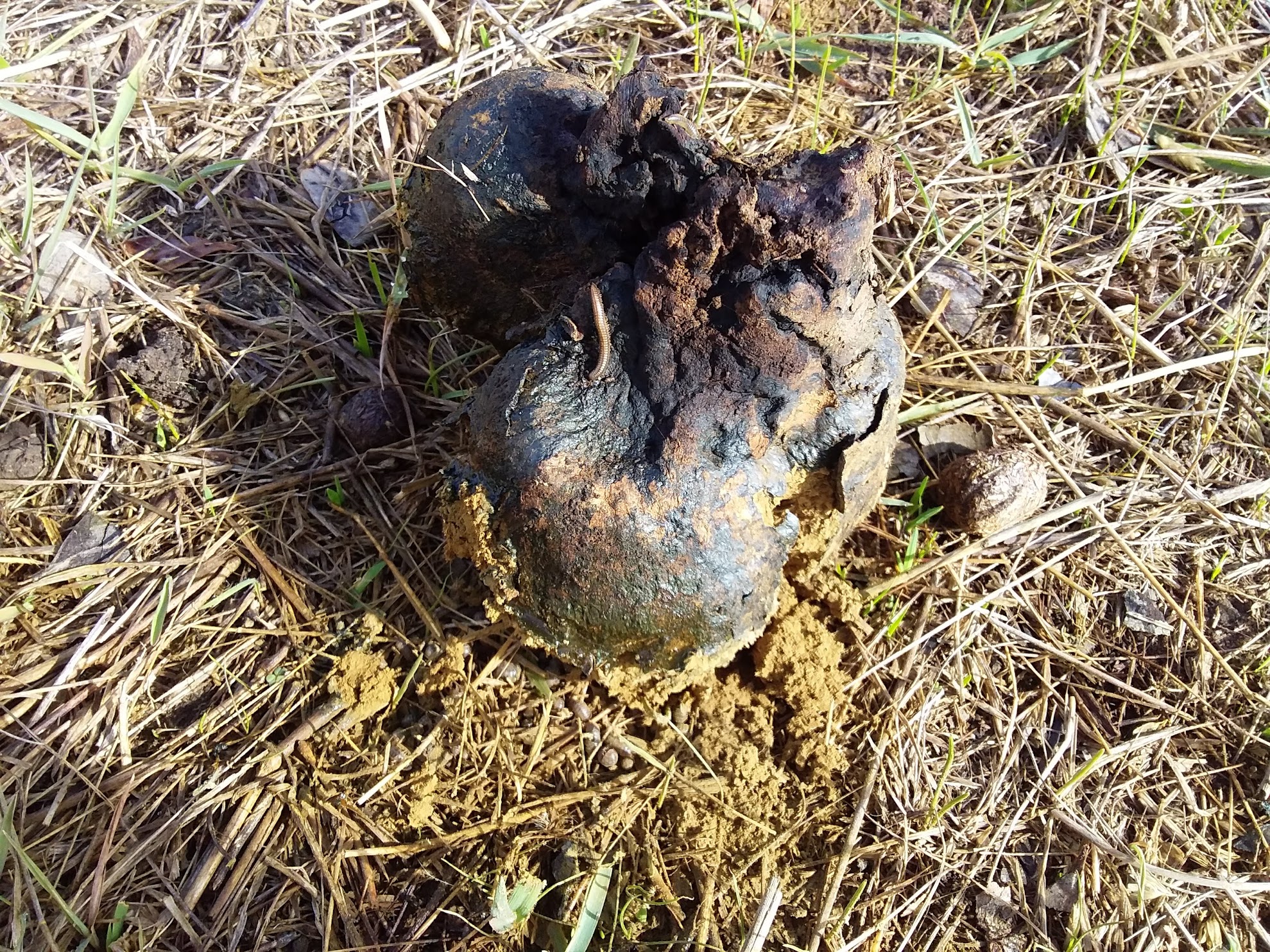
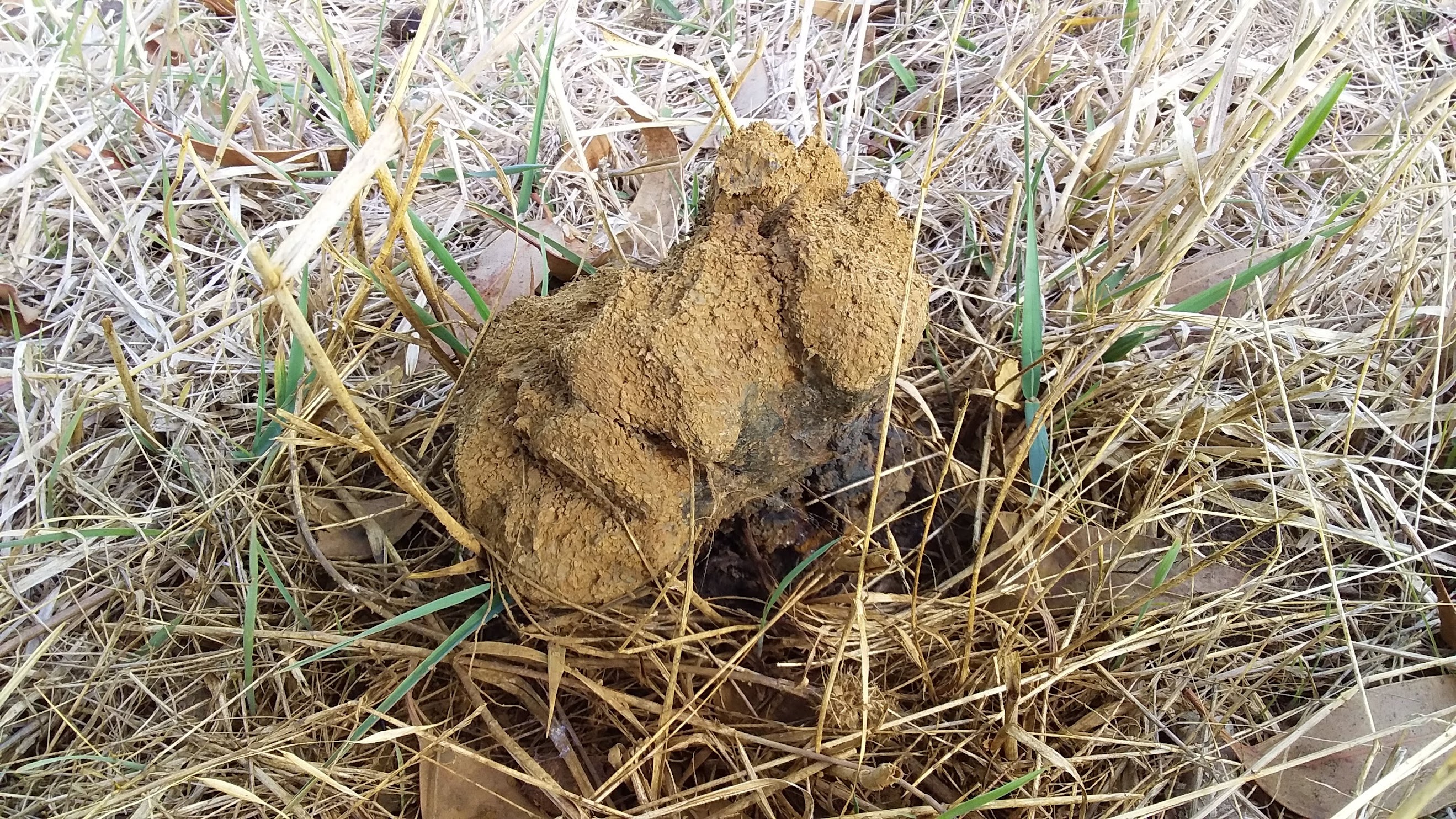
Pisolithus in various states of decay
Starting in winter 2019, we started noticing a profusion of little orange-brown mushrooms popping up in patches of soil bared out by kangaroos underneath some of our planted trees in our fenced off revegetation areas. They have been coming back year upon year now and have spread to new areas. They are from the Laccaria genus, which contains many species that are very difficult to tell apart. They have a white spore print, have white-tinged gills underneath and are very delicate. Their common name is ‘The Deceiver’ and they are mycorrhizal. A fungi expert once told me that they are an indicator of degraded soil that is trying to recover. Sounds about right!
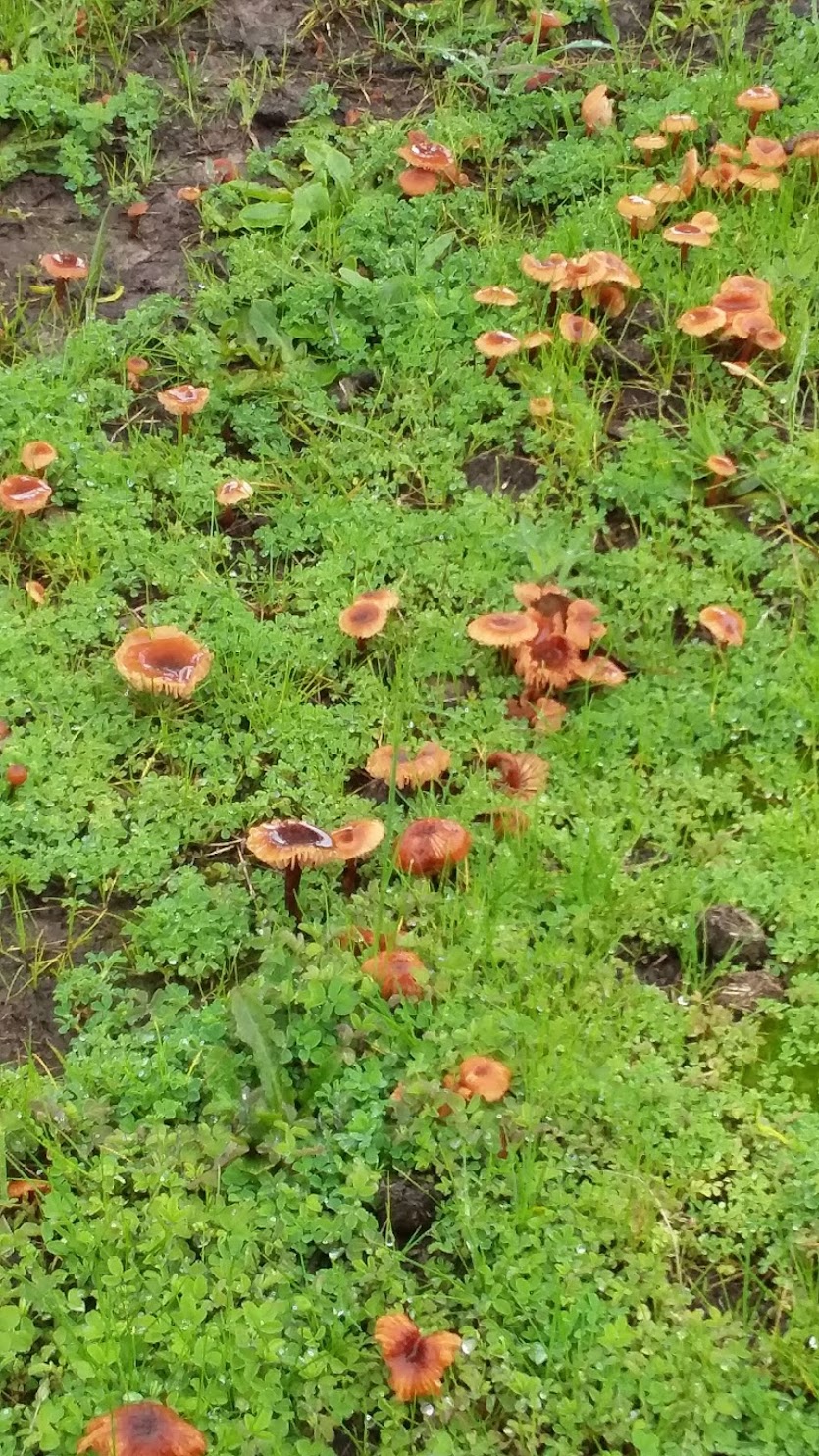
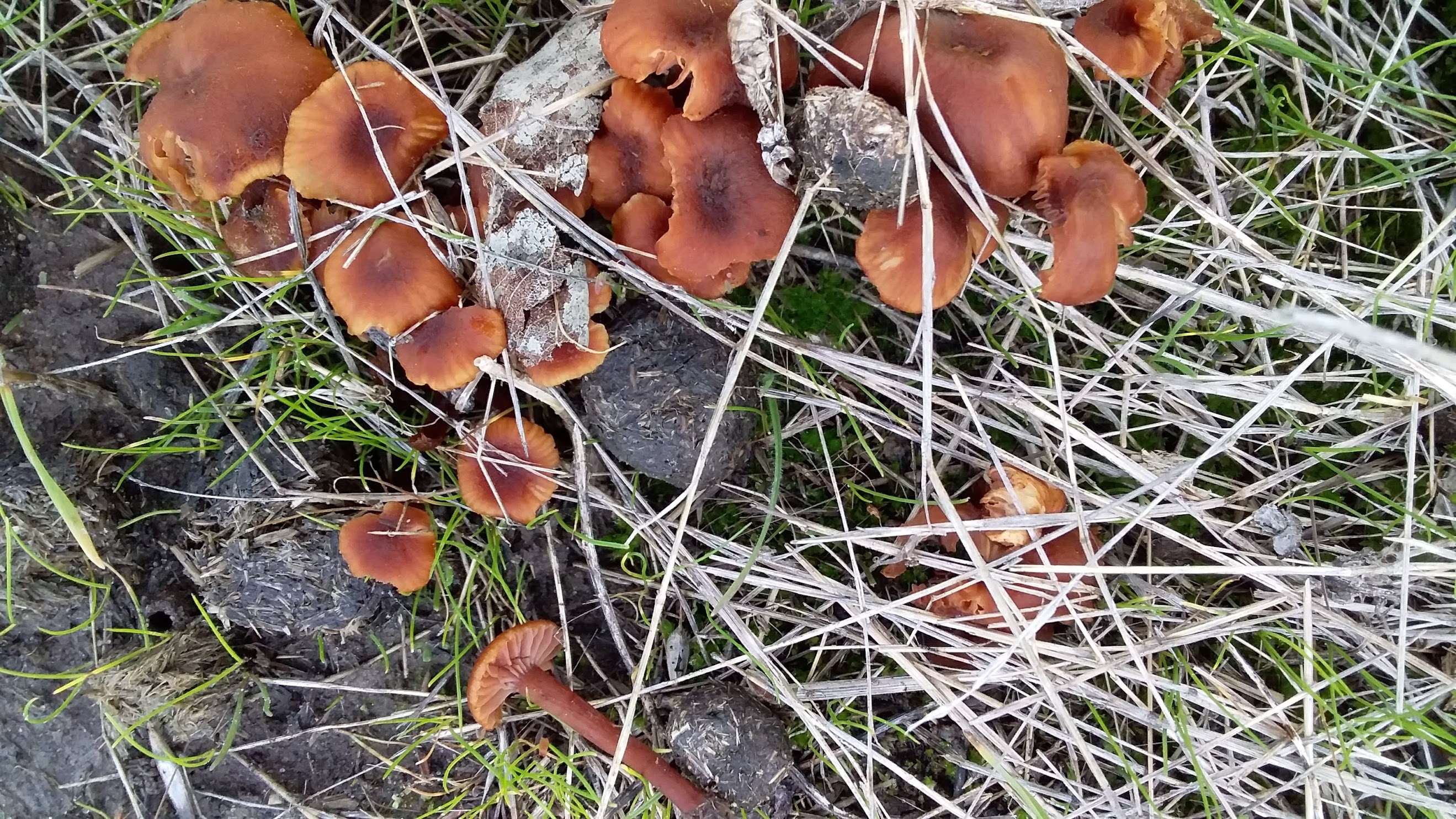
The Deceiver in action
A huge Eucalyptus camaldulensis trunk came down in a storm many years ago and has lain rotting on the ground ever since (where possible we allow things to rot and form homes for flora, fauna and funga and become new life rather than using it as firewood). We had never previously noticed any fungi breaking it down until this year when we discovered a diversity of fungus species. We had a white jelly appearing out of cracks in the wood, Tremella fuciformis (Snow fungus/White Brain), which is apparently parasitic on the mycelium of other fungi. We had multiple species of tiny Mycena popping up, both out of the wood and out of leaf litter on the ground. We had a large red-orange Gymnopilus with its gorgeous conical shape and rusty brown spore print, which a mycologist friend suggested may be Gymnopilus purpuratus but more investigation is required. Even the Trametes coccinea (Scarlet Bracket), one of Australia’s most common and widespread species, was having a go deconstructing one end. Had they been there for years and we hadn’t noticed, given some only fruit for a few weeks, or had the log finally been there long enough for airborne spores to find it?


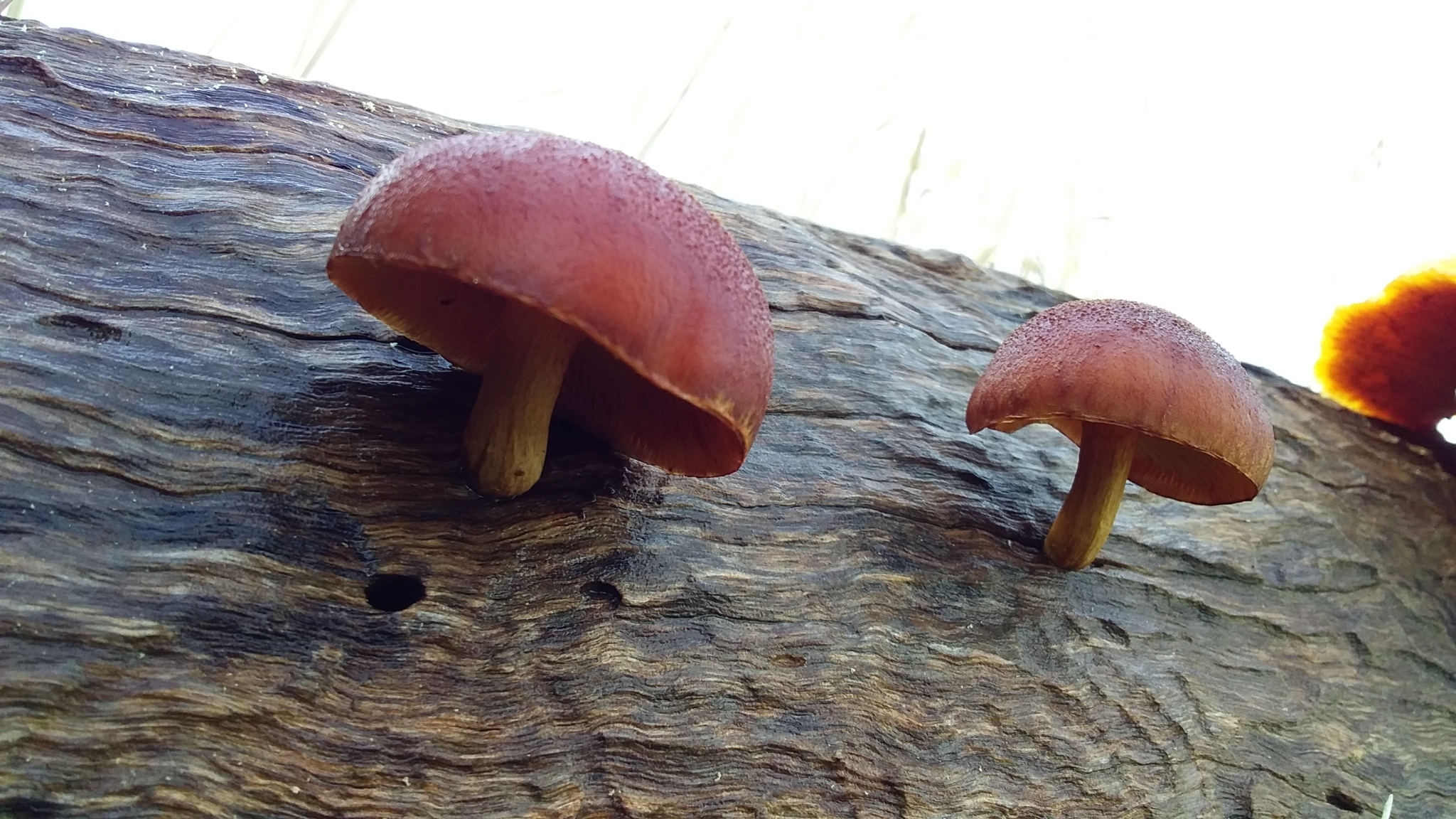
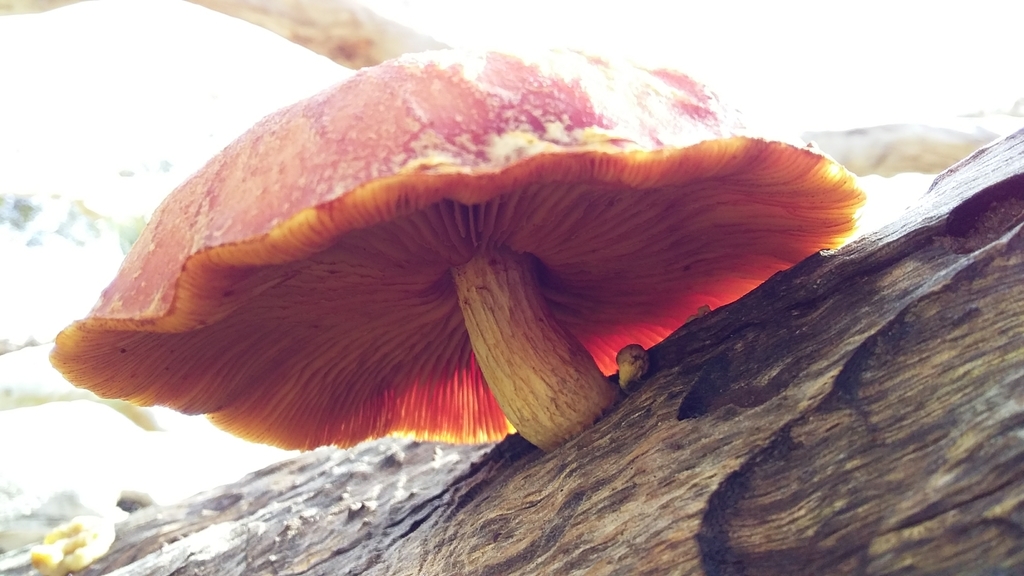
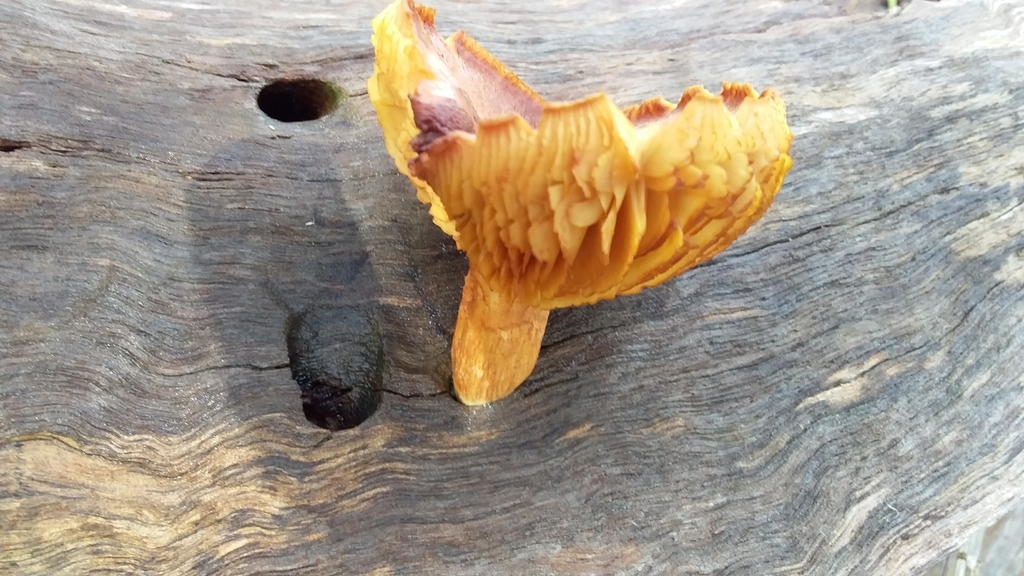

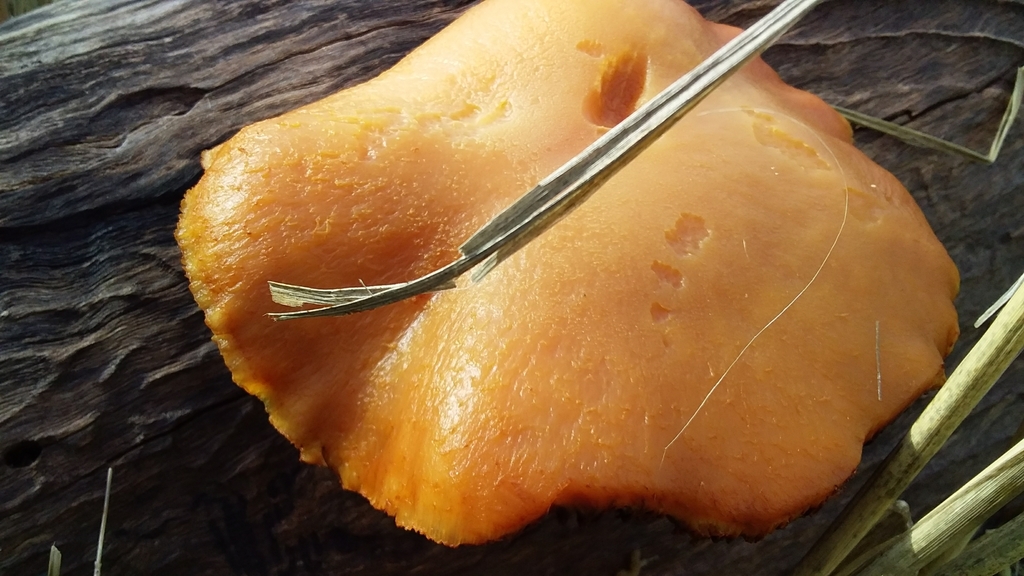
Gymnopilus in various stages of development, possibly Gymnopilus purpuratus
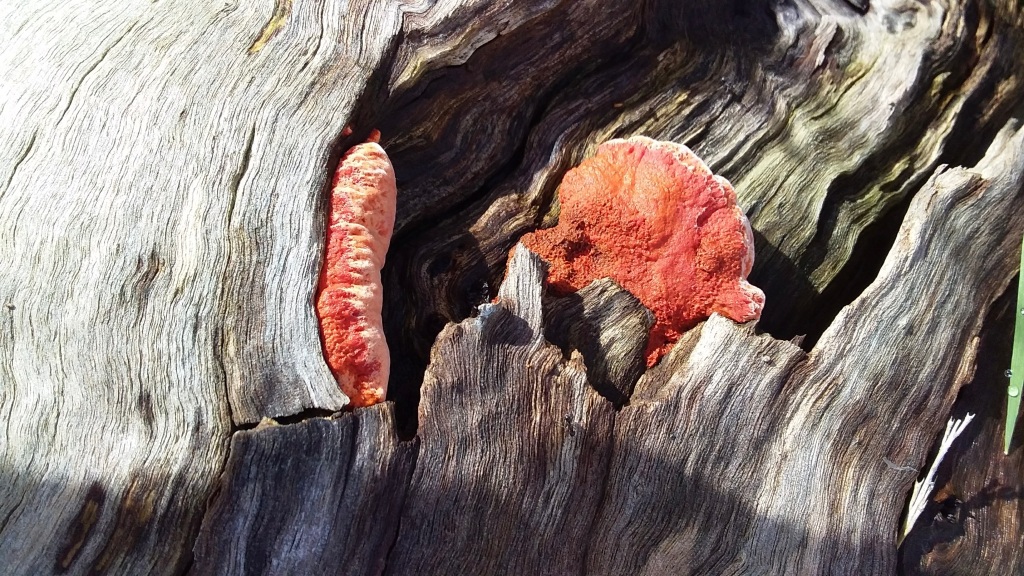
However the most exciting fungi development this year has been the sudden arrival and proliferation of the Onion Earthball (Scleroderma cepa). Again, from seemingly out of nowhere, presumably with spores blown on the wind and mycelium quietly developing unnoticed underground, this winter almost every single one of our larger Pink gums (Eucalyptus fasciculosa), Blue gums (Eucalyptus leucoxylon), Eucalyptus occidentalis, and Drooping Sheoaks (Allocasuarina verticallata), was sporting an abundance of these yellow balls in a circular formation under the tree’s canopy. They start like a hard tennis ball with a thick yellow peridium, which then breaks open into lobes through exposure to the elements. Inside are millions of tiny dark-coloured spores that blow away as the sporophore disintegrates, going on to seek out new partners. I collected spores from several parts of the property and a mycologist at the SA Herbarium analysed the spores with a microscope – she confirmed the spores are large, globose, 10-17 µm diameter, and have scattered spines – confirming it to be Scleroderma cepa. This is a very good species to have as it is ectomycorrhizal, forming a symbiosis with the tree by attaching to the outside of the tree’s roots and greatly enhancing the tree’s ability to survive in a hostile disturbed landscape, as evidenced by the successful growth rates of the trees surrounded by Earthballs. It appears as though our only trees which are growing successfully are those which have formed a partnership with a Scleroderma (or given the symbiosis, perhaps the successful trees are leading to larger and more successful mycelium networks so we see a greater abundance of sporophores around these bigger trees). Either way, we cannot possibly express how grateful we are to these humble little yellow balls which apparently believe in restoring a woodland at Yarnauwi!
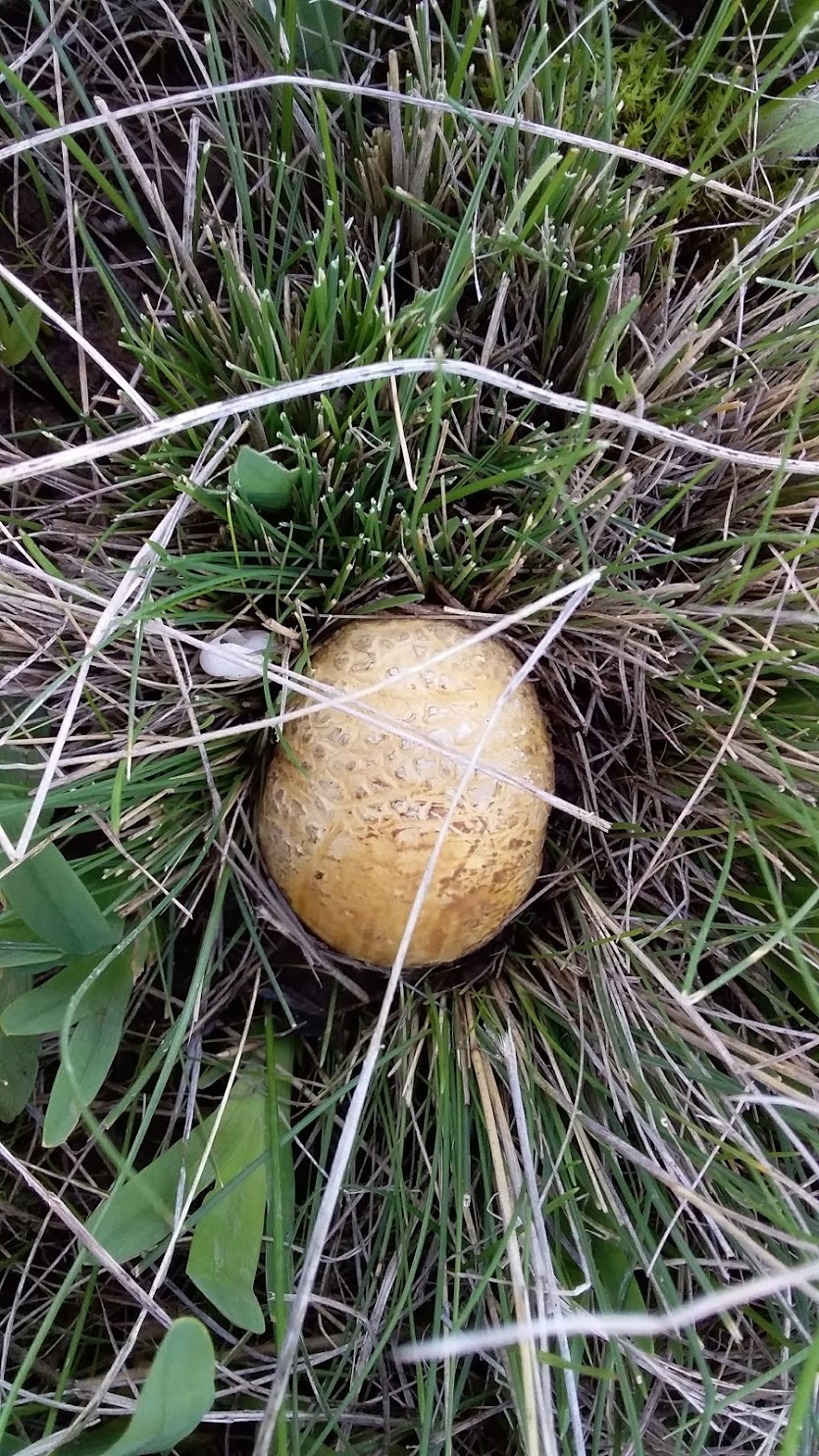
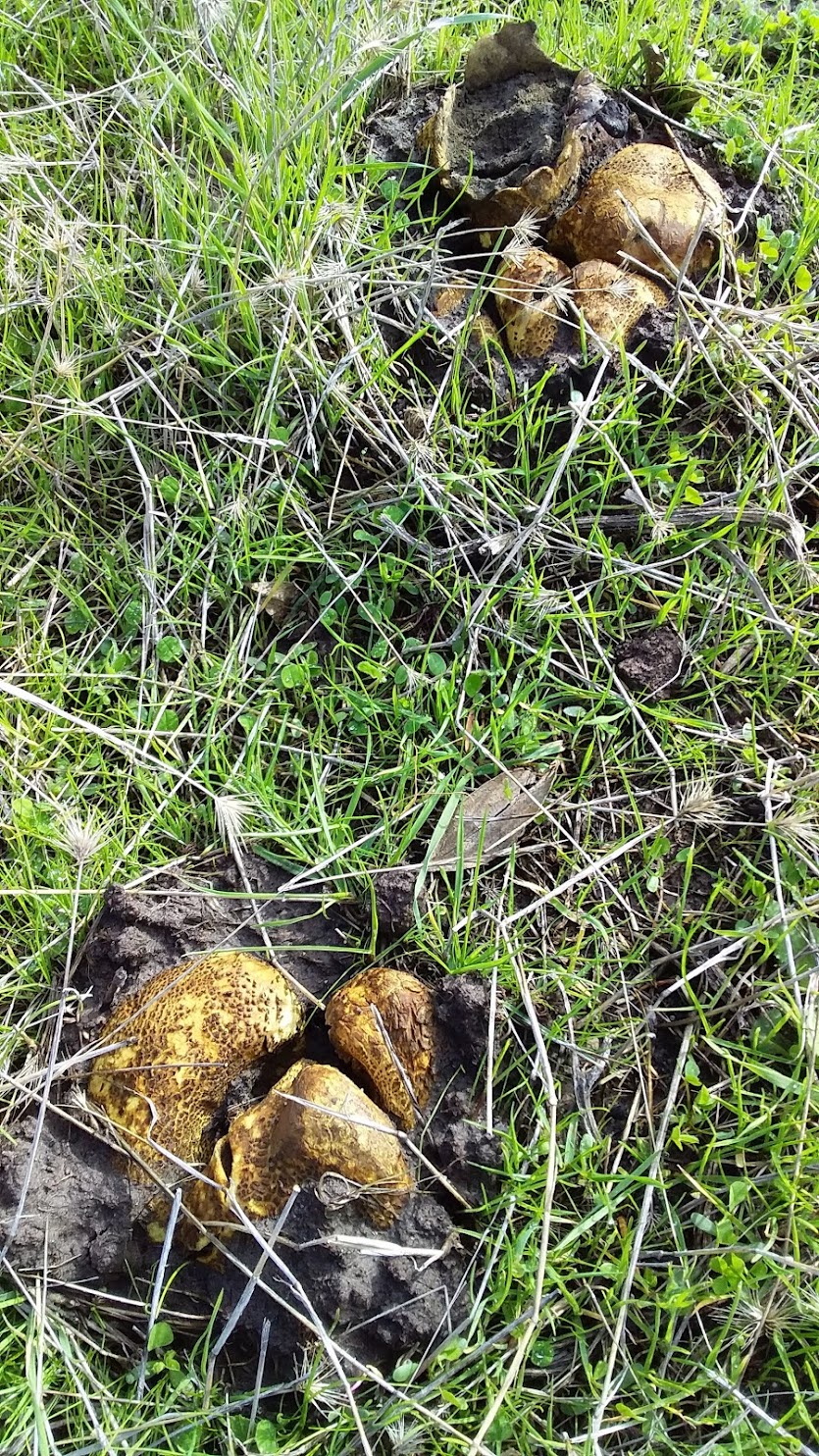
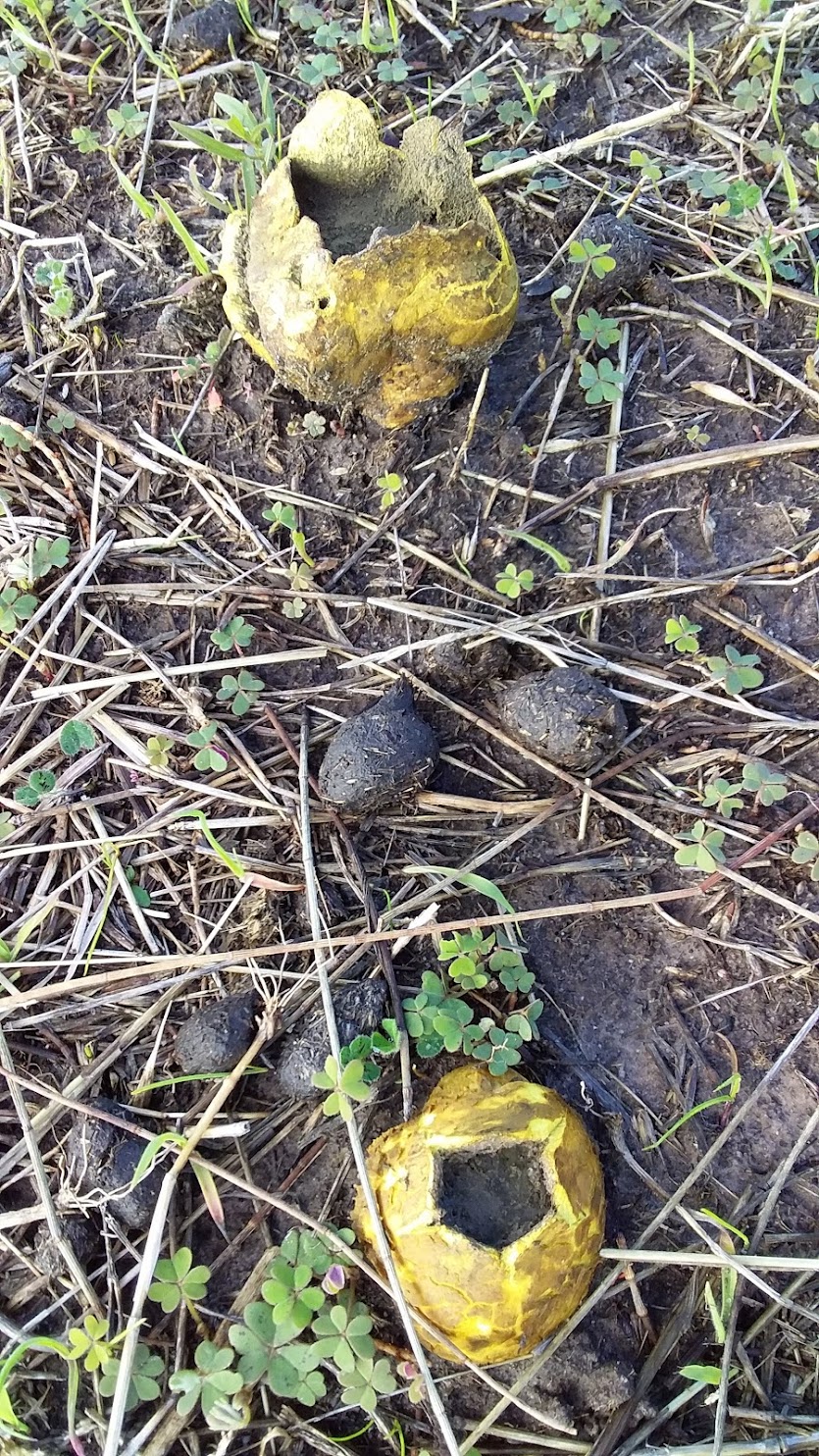
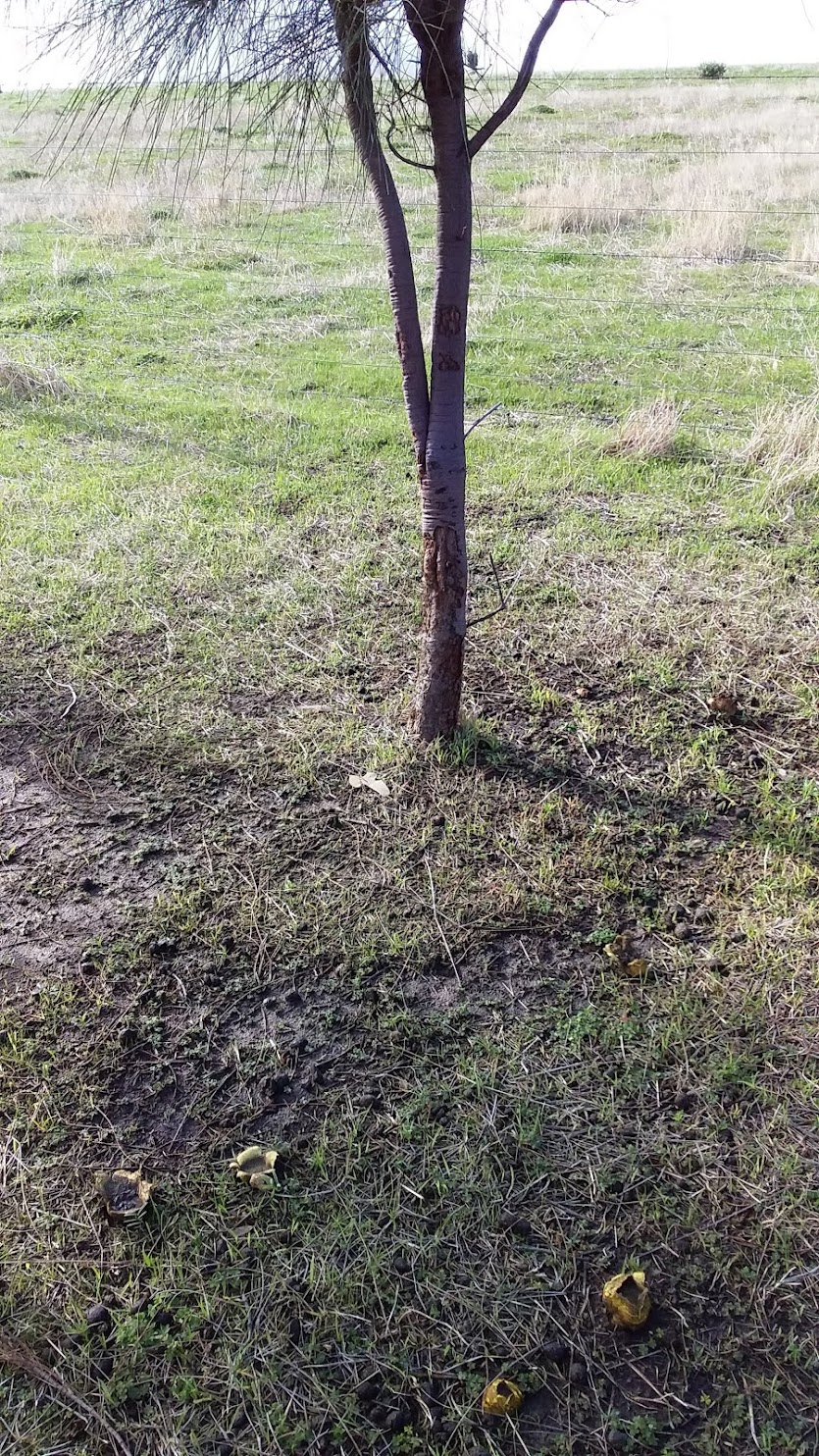
Scleroderma cepa (Onion Earthball) at various ages and stages.
We’ve also had Schizophylum commune (Splitgill) ‘spoil’ our silage, with these beautiful furry cream/brown tiered sporophores bursting through the plastic wrapping all over some of the bales of silage. They are breaking down the woody organic matter contained within so keen are they to get recycling. This species is also common and found around the world, being one of the first to colonise dead and damaged wood. A word of warning, if you do see the Splitgill, try not to breathe it in as it may be pathogenic and has been linked to skin and lung problems in immuno-compromised people in other countries.
This year has also seen the return of a significant number of field mushrooms (Agaricus species). We have always had a few Agaricus around the place, but they seem to be yet another thing that kangaroos and insects devour, and by the time we saw them they were usually either eaten or heavily disintegrated by the rain. This year we seemed to see more fruiting bodies before anything got to them, and generally always in our fenced off revegetation areas which used to be grazed but no longer are. Given the variety of sizes, colours and cap shapes, it’s been hard to identify if they are all one species, but those I’ve tested have a brown spore print, and the pileus/cap is almost always radially fibrillose. Some Agaricus are edible while others are toxic, and there are many different species which occur in Australian farm paddocks, so we would like to give these more study next year and find out if they could be another farm-foraged food option.


And finally we’ve noticed a few other random little tiny mushrooms within a fenced off area that was burnt by fire a few years ago. We’re not sure what they are, but would certainly like to find out. The first one has a very smooth pileus of white to pale orange colour, is approximately 3cm diameter, has a ring at the base, white gills and a brown spore print. It may be in the Stropharia genus but more investigation is required. The second one is tiny, gilled and with an interesting pattern on the cap.

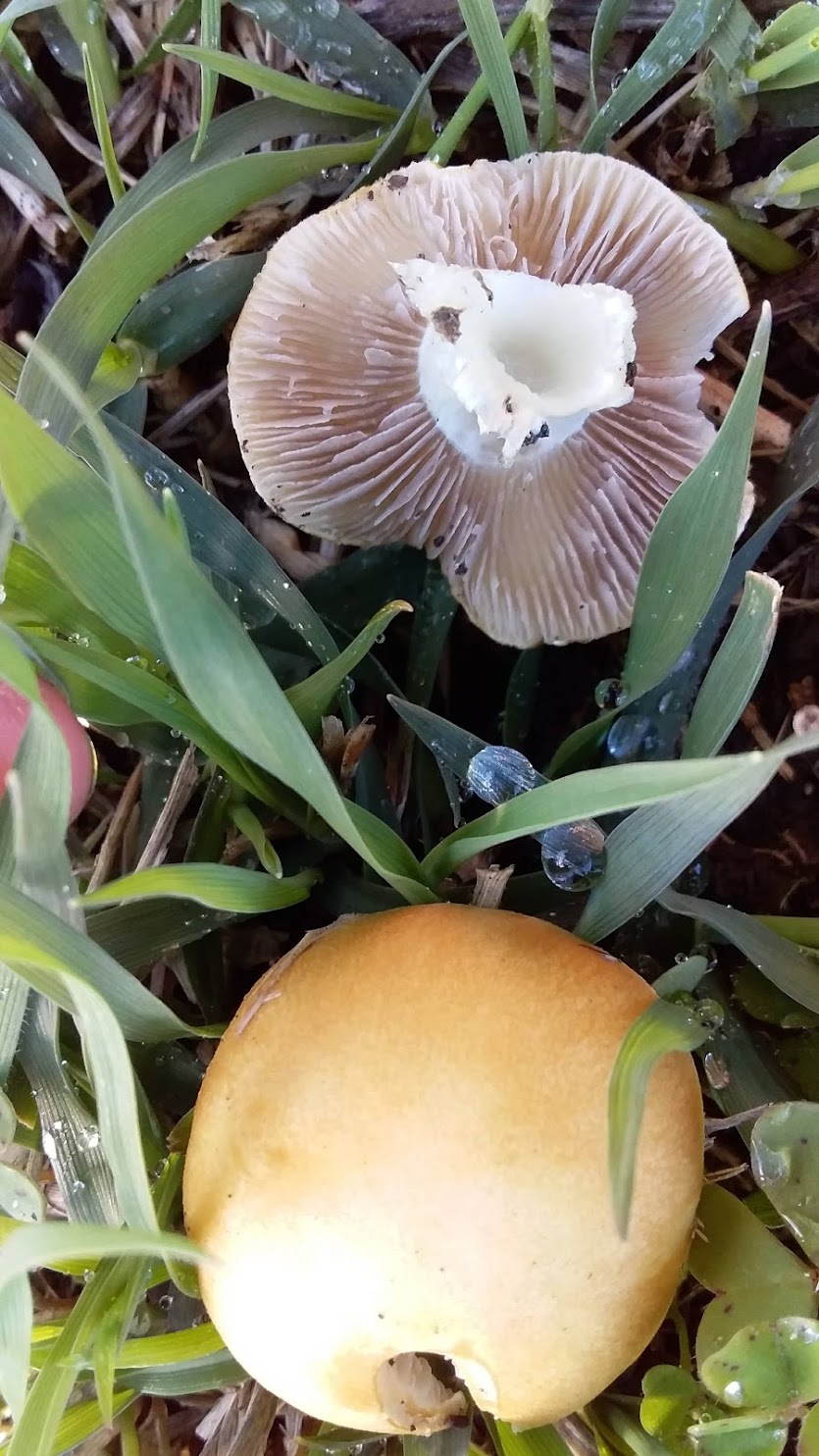
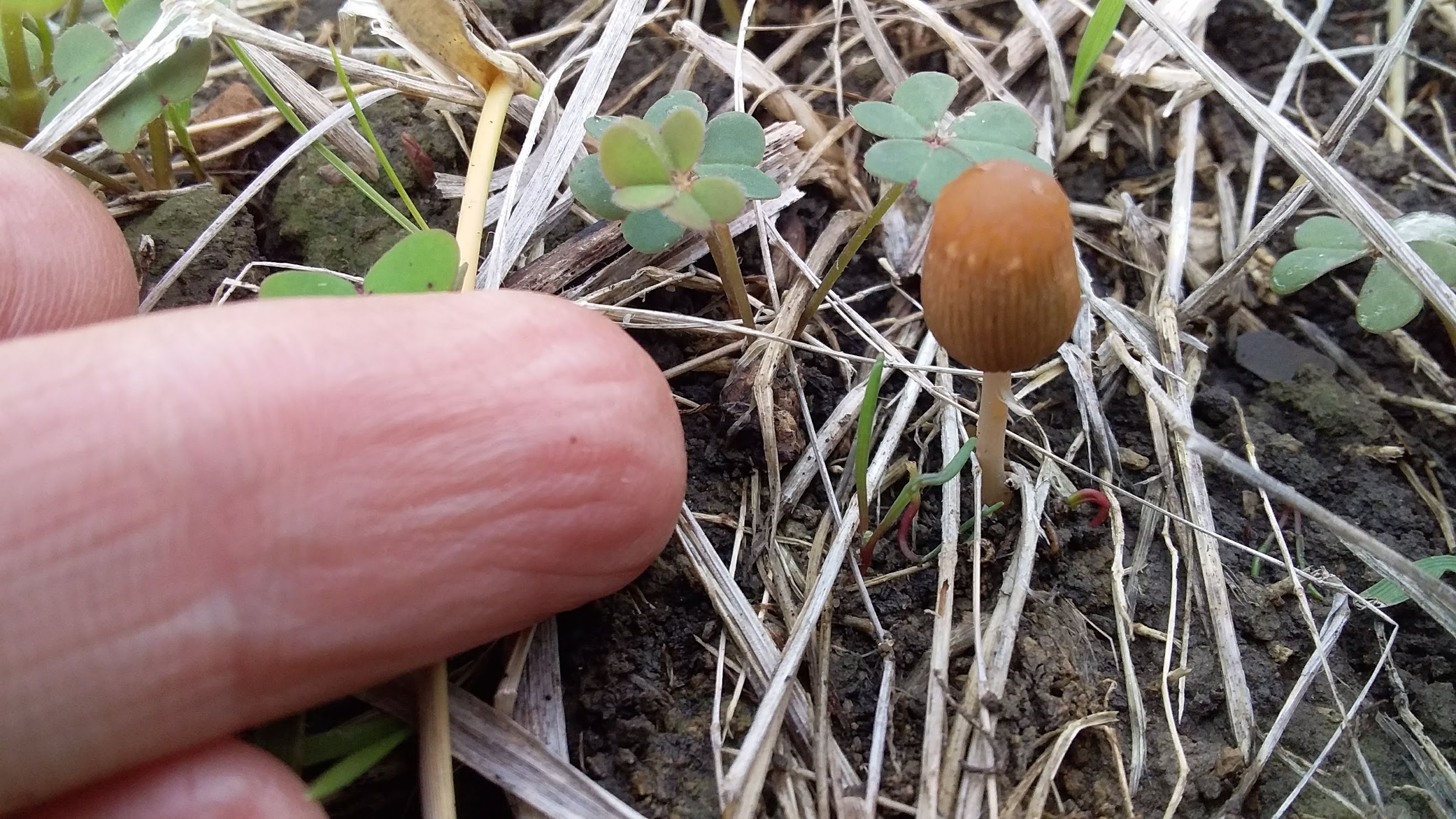
Tiny little things, the two on the left are probably Stropharia.
In summary, as the third kingdom of life on earth, fungi are giving us a lot to think about and explore at Yarnauwi. As well as appreciating them for their inherent biodiversity value, we also see them as a window into the world of what is going on underground. The more we learn, the more we realise there is to learn, the more we realise we don’t know, and the more we realise can be affected by our management decisions and actions. Our next goal is to work on improving fungal networks in our grazing paddocks (currently annually slashed for fire prevention or left fallow as we don’t have any stock, and increasingly dominated by annual grasses and wild brassica – though on the upside small birds love the protection and habitat this affords them!) Fungi are a huge part of a healthy living soil which we need so we can draw down carbon through perennial plants, improve nutrient and water cycling in the soil, reduce erosion, provide healthy pasture for livestock, and support increased abundance of all kinds. Fungi are the foundation.
Thanks to Pam Catcheside for her generous advice, and to various iNaturalist users for suggesting or confirming species identification. All errors are the author’s own. Readers are encouraged to log their own fungi observations/sightings on the ‘Fungimap Australia’ project on iNaturalist, to become part of Atlas of Living Australia data.

